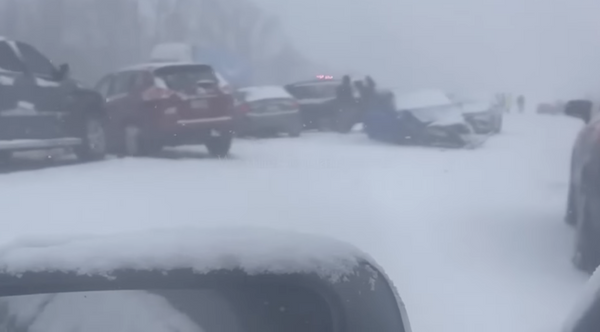
Ministers have stripped the government’s road-building agency of responsibility for a £10bn tunnel under the River Thames amid a drive by Keir Starmer’s cabinet to take tight control over important infrastructure projects for fear of cost overruns and delays.
Oversight of the Lower Thames Crossing – the UK’s largest planned infrastructure project – has been taken away from National Highways and handed to the Department for Transport (DfT).
Internal consultation documents, seen by the Guardian, said the costs of the Lower Thames Crossing would be overseen by the DfT, leaving National Highways to “focus on managing, maintaining and renewing the network”.
However, campaigners warned that the move could in fact lead to HS2-levels of overspending and ministers approving developments behind closed doors that would harm the environment.
Treasury officials are thought to be behind the shift to centralise the management of large infrastructure projects after the chancellor, Rachel Reeves, made clear her frustration at “bats and newts” delaying major schemes and adding to the final costs.
The consultation documents showed that the “Tier 1” project – which is considered by the DfT to be “one of the largest, highest risk, novel and/or contentious” schemes now being undertaken – would be overseen by the transport secretary, Heidi Alexander.
Reeves and Starmer have put planning reform at the heart of their growth plans after drafting legislation earlier this year to make it easier to build without paying as much for expensive wildlife protection.
The chancellor is keen to include a number of initiatives designed to allow developers to build houses and infrastructure projects, in the hope that higher economic growth will fill about £3bn of an estimated £30bn shortfall in the Treasury’s finances.
Earlier this week, Reeves was taped claiming that she had unblocked a development of 20,000 homes that was being held up by a rare snail.
The new Thames crossing has received final planning consent and secured £590m for early-stage excavation, surveys and consultations. In addition, the construction firm Balfour Beatty has landed a £1.2bn contract to build roads connecting to the tunnel.
However, funding for the full project has been delayed while the chancellor searches for a partner that could contribute as much as £2bn to the scheme in return for charging a toll. Work is expected to get under way before the end of the decade.
The site lies east of the Dartford crossing, which takes traffic from the M25 and lorries travelling to and from the ports of Dover and Folkestone.
Environmental campaigners argue that vital habitats on Kent’s north shoreline and the south Essex coast will be lost if the tunnel goes ahead. It will also increase carbon emissions without solving congestion on existing roads, they added.
Chris Todd, the director of Transport Action Network, said: “The government is continuing to throw good money after bad at the Lower Thames Crossing.
“Taking it outside of National Highways’ roads programme and treating it as a stand-alone project, with a DfT-signed blank cheque, risks going the same way as HS2 with ballooning budgets and no accountability.”
Supporters of the project say the new tunnel will reduce traffic jams in Dartford and allow commercial vehicles en route from Europe to the Midlands and the north to circumvent the most congested parts of the M25.
Alexander said earlier this year that the government was “finally getting on” with the crossing, adding that the “crucial project” had “been stuck in planning limbo for far too long”.
National Highways has said that an extra connection between north Kent and Essex is also needed to allow for maintenance on the existing Dartford tunnels.
It is understood that National Highways will remain responsible for the development of the crossing and will publish a breakdown of costs in its annual report, but decisions over the scope and funding of the project will be taken by ministers.
A Department for Transport spokesperson said: “Backed by £590m, the Lower Thames Crossing is the most significant road-building project in a generation – and will cut local congestion, better link up motorists and businesses in the Midlands and north with key ports in the south-east, and spreading growth throughout the regions, as set in our plan for change.”
The best public interest journalism relies on first-hand accounts from people in the know.
If you have something to share on this subject you can contact the Business team confidentially using the following methods.
Secure Messaging in the Guardian app
The Guardian app has a tool to send tips about stories. Messages are end to end encrypted and concealed within the routine activity that every Guardian mobile app performs. This prevents an observer from knowing that you are communicating with us at all, let alone what is being said.
If you don't already have the Guardian app, download it (iOS/Android) and go to the menu. Scroll down and click on Secure Messaging. When asked who you wish to contact please select the Guardian Business team.
SecureDrop, instant messengers, email, telephone and post
If you can safely use the tor network without being observed or monitored you can send messages and documents to the Guardian via our SecureDrop platform.
Finally, our guide at theguardian.com/tips lists several ways to contact us securely, and discusses the pros and cons of each.







